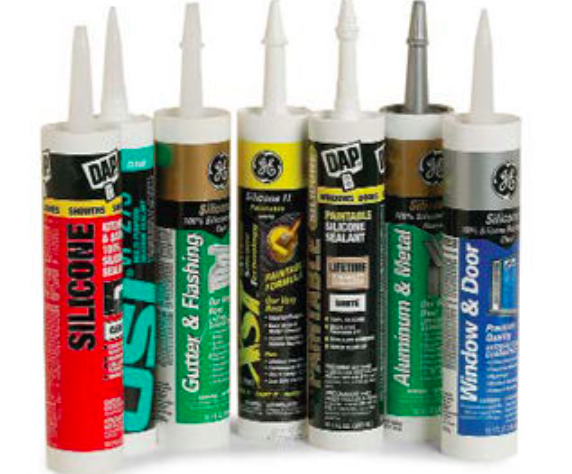
Silicon (not to be confused with silicone), is number 14 on the periodic table of elements and happens to be second most abundant element in the earth’s crust. It was first isolated as an element in the 1820s and has since been used to create products we use in everyday life. It is used in semiconductors and photovoltaic panels. Silicon dioxide, or silica, is used in concrete and in the production of ceramics. Silicon is also used to create silicone, a manmade compound with many applications. It is used in the medical profession (think: implants) and as a lubricant in industrial applications. This article, however, will focus on its use in the construction industry, as a sealant.
Sealant terminology
A sealant is a material used to keep something—liquid, air, dust, sound, and/or heat—in or out of a joint or opening; it’s a type of mechanical seal. Sealant is often referred to as “caulking,” I’ve also heard “silicone” used as a blanket term when describing sealants. Silicone is a synthetic or man-made polymer that is one type in a family of many different formulations of sealants. It was first introduced in the construction industry in the mid 1950s and is a popular sealant today, even with many other choices available.
Adhesion is the “stick to others” part of a sealant. Adhesion is an attraction between two different materials. A related term, adhesion failure, is the loss of connection between the sealant and substrate.
Cohesion is the “stick to itself,” meaning it’s the force of attraction between the same molecules. Cohesion failure is when the sealant loses bond with itself but the bond to the substrate remains.
Elasticity/elongation is the stretch and return to normal of a material. (My favorite analogy is yoga pants; they stretch…
Weekly Newsletter
Get building science and energy efficiency advice, plus special offers, in your inbox.

This article is only available to GBA Prime Members
Sign up for a free trial and get instant access to this article as well as GBA’s complete library of premium articles and construction details.
Start Free TrialAlready a member? Log in















6 Comments
A glaring omission in this article about silicone alternatives is MS polymers.
Randy,
Thanks for the article. Related questions for Randy or others about exterior sealing...
I'm not handy and am in climate zone 5a (has wet and freeze/thaw seasons). A contractor rehabbed a multi-pane bow window that has many pieces of trim. I see these classes of joints (seams?) - concrete to trim at a 90 sealed with paint or nothing; same but with old caulk; trim to trim at 90 sealed with paint, nothing, or caulk; and trim to trim at 180 (trim sitting on top of trim) sealed with paint or nothing.
He must at least come back and seal the black slits. But with what... Are any of these OK to seal with just paint? Is it best practice to rely on old caulk if it's judged to be in good shape? And most related to the article, if it's best to seal any of these with caulk, what sealant class works best best to adhere from concrete to paint and which works best from paint to paint. Pics are attached.
People tell me I'm too picky. When you stand back, the contractor made the window as a whole look restored. Give me a reality check if I need one.
Thanks,
Gordon
Good questions and pictures tell the story. I look forward to the response.
Thanks ryanmiday. I've had some contractors who pay great attention to detail. But between college painters and less conscientious contractors it's important for homeowners to know how something as common as sealing and painting trim should be done. But, no love here so I re-asked the question as "Sealing Exterior Window Trim" - watch it too for an answer.
I'm curious if the synthetic rubber products, like DAP Ultra Clear, are known to be safe with double-pane glass units. Would they degrade the butyl rubber seal between panes over time?
thanks,
JS
I've been reading about 100% solids, no VOC sealant options. This may be what comment #1 is referring to. I get confused by some of the terminology. I've just tried Titebond Weathermaster on a window install. I found it to be very easy to work with.
Log in or become a member to post a comment.
Sign up Log in